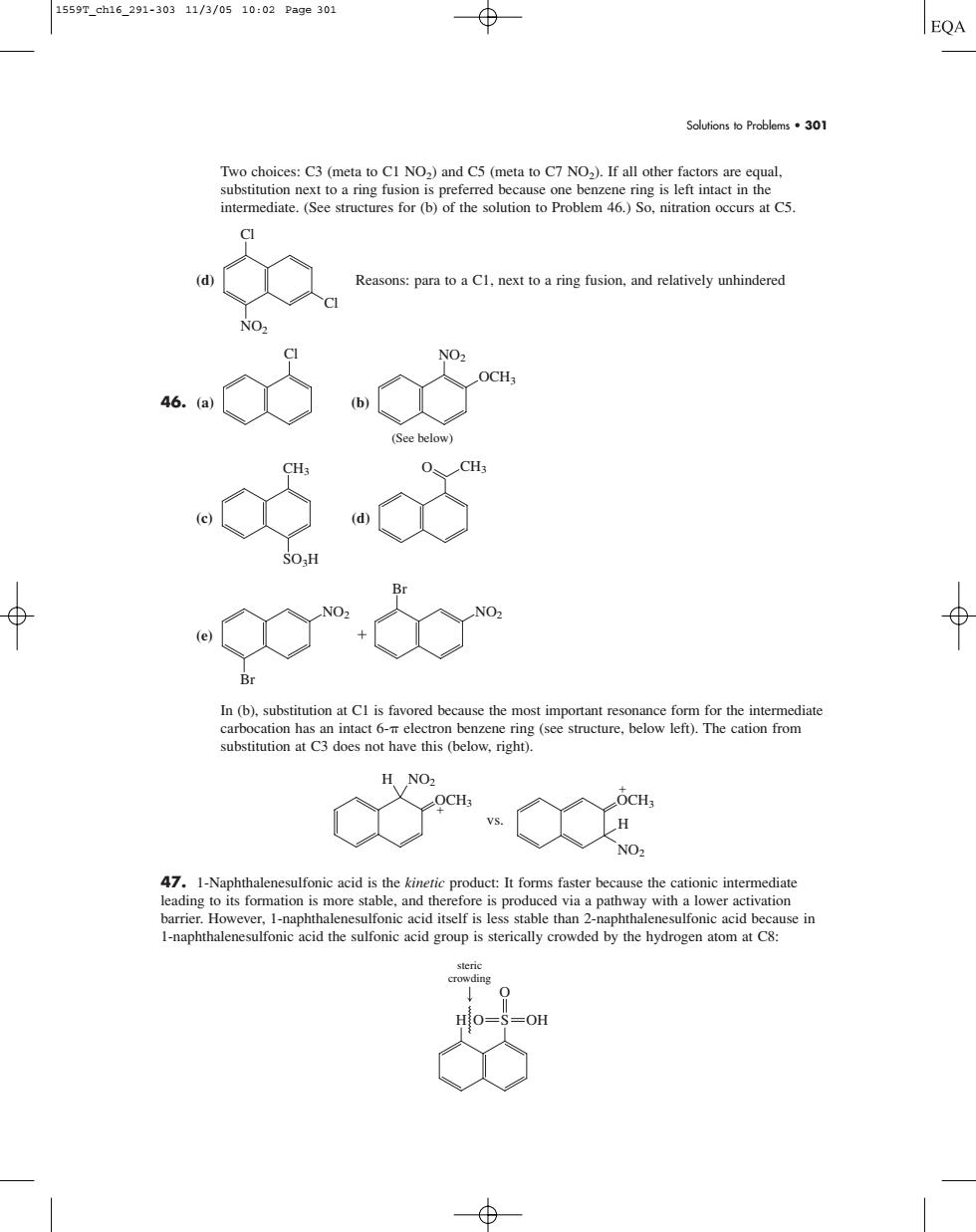正在加载图片...

1559rch16291-30311/3/0510:02Page301 EQA Soutionso Problems301 meta to intermediate.(See structures for (b)of the solution to Problem 6.)So.nitration occurs at C5 Reasons:para to a Cl.next to a ring fusion,and relatively unhindered benzene ring (see structure. s(below.right c acid is the kin -naphthalenesu acid the sulfonic acid group is sterically crowSolutions to Problems • 301 Two choices: C3 (meta to C1 NO2) and C5 (meta to C7 NO2). If all other factors are equal, substitution next to a ring fusion is preferred because one benzene ring is left intact in the intermediate. (See structures for (b) of the solution to Problem 46.) So, nitration occurs at C5. (d) Reasons: para to a C1, next to a ring fusion, and relatively unhindered 46. (a) (b) (c) (d) (e) In (b), substitution at C1 is favored because the most important resonance form for the intermediate carbocation has an intact 6- electron benzene ring (see structure, below left). The cation from substitution at C3 does not have this (below, right). 47. 1-Naphthalenesulfonic acid is the kinetic product: It forms faster because the cationic intermediate leading to its formation is more stable, and therefore is produced via a pathway with a lower activation barrier. However, 1-naphthalenesulfonic acid itself is less stable than 2-naphthalenesulfonic acid because in 1-naphthalenesulfonic acid the sulfonic acid group is sterically crowded by the hydrogen atom at C8: S O H O OH steric crowding H OCH3 vs. OCH3 H NO2 NO2 Br Br NO2 NO2 CH3 O CH3 SO3H OCH3 NO2 (See below) Cl Cl Cl NO2 1559T_ch16_291-303 11/3/05 10:02 Page 301���